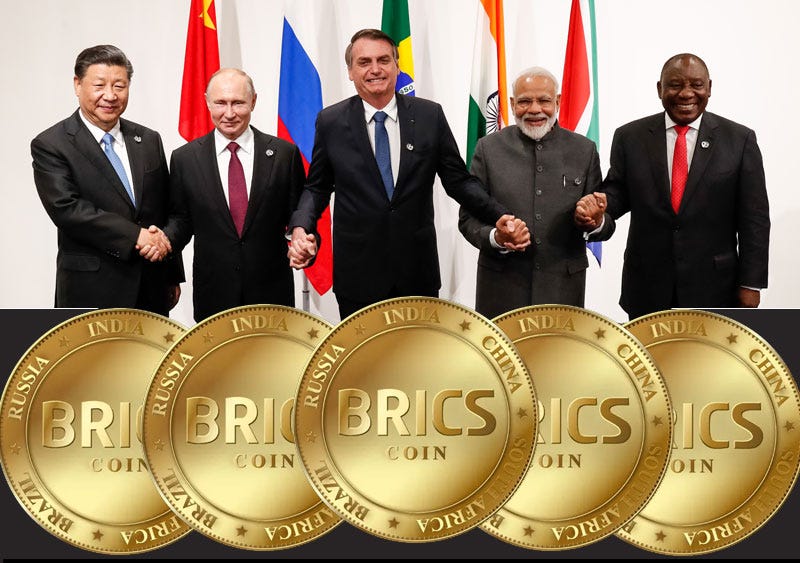The BRICS nations – Brazil, Russia, India, China, and South Africa – have emerged as key players in the global economic landscape. As these nations continue to solidify their positions, discussions about a common currency have gained momentum. The prospect of a unified BRICS currency has sparked debates and raised questions about its feasibility, potential benefits, and challenges. In this article, we will delve into the concept of a BRICS currency, exploring the motivations behind such an initiative, the potential advantages, and the hurdles that lie ahead.
Historical Background:
The idea of a shared currency among the BRICS nations is not entirely new. It gained traction in the aftermath of the 2008 global financial crisis when these emerging economies sought alternatives to the existing international monetary system, which they perceived as dominated by Western powers. The BRICS countries have since engaged in discussions and initiatives to strengthen their economic ties, with the creation of a common currency being a prominent point of discussion.
Motivations for a BRICS Currency:
- Reducing Dependency on Western Currencies: One of the primary motivations for a BRICS currency is to decrease reliance on the US dollar and the euro in international trade. By establishing their own currency, these nations aim to mitigate the impact of currency fluctuations and economic policies outside their control.
- Enhancing Economic Cooperation: A common currency could foster increased economic cooperation among the BRICS nations. It would simplify trade transactions, eliminate currency exchange costs, and facilitate smoother cross-border business activities, ultimately promoting economic growth within the bloc.
- Strengthening Political Unity: The creation of a joint currency could also serve as a symbol of political unity among the BRICS countries. It would signify a collective effort to challenge the traditional dominance of Western nations in the global economic order.
Potential Advantages of a BRICS Currency:
- Trade Facilitation: A unified currency would streamline trade transactions among BRICS nations by eliminating the need for multiple currency conversions. This could lead to increased efficiency, reduced transaction costs, and a boost in intra-BRICS trade.
- Currency Stability: A BRICS currency could provide greater stability by insulating member nations from the volatility associated with global reserve currencies. This stability could attract foreign investment and enhance economic resilience during times of financial uncertainty.
- Increased Global Influence: A joint currency could enhance the collective influence of the BRICS nations on the global stage. It would challenge the dominance of Western currencies and potentially reshape the dynamics of international finance and trade.
Challenges and Considerations:
- Diverse Economies: One of the major challenges is the significant economic diversity among BRICS nations. Varying levels of development, inflation rates, and fiscal policies could complicate the establishment of a single monetary policy that suits all member countries.
- Coordination and Cooperation: Achieving consensus among the BRICS nations on the design, implementation, and management of a common currency poses a significant challenge. Cooperation in monetary policy and coordination of economic strategies would be crucial for the success of such an initiative.
- Global Acceptance: The global acceptance of a BRICS currency would require overcoming skepticism and building confidence in its stability and reliability. Developing a currency that competes with established reserve currencies like the US dollar would demand strategic planning and effective communication.
Conclusion:
The concept of a BRICS currency holds immense potential in reshaping the global economic order. While challenges and uncertainties persist, the benefits of reduced dependency on Western currencies, enhanced economic cooperation, and increased global influence make the idea worth exploring. As the BRICS nations continue to strengthen their economic ties, the prospect of a joint currency remains a fascinating avenue for the future of international finance. The success of such an initiative would not only impact the member nations but could also have far-reaching implications for the broader global economic landscape.




